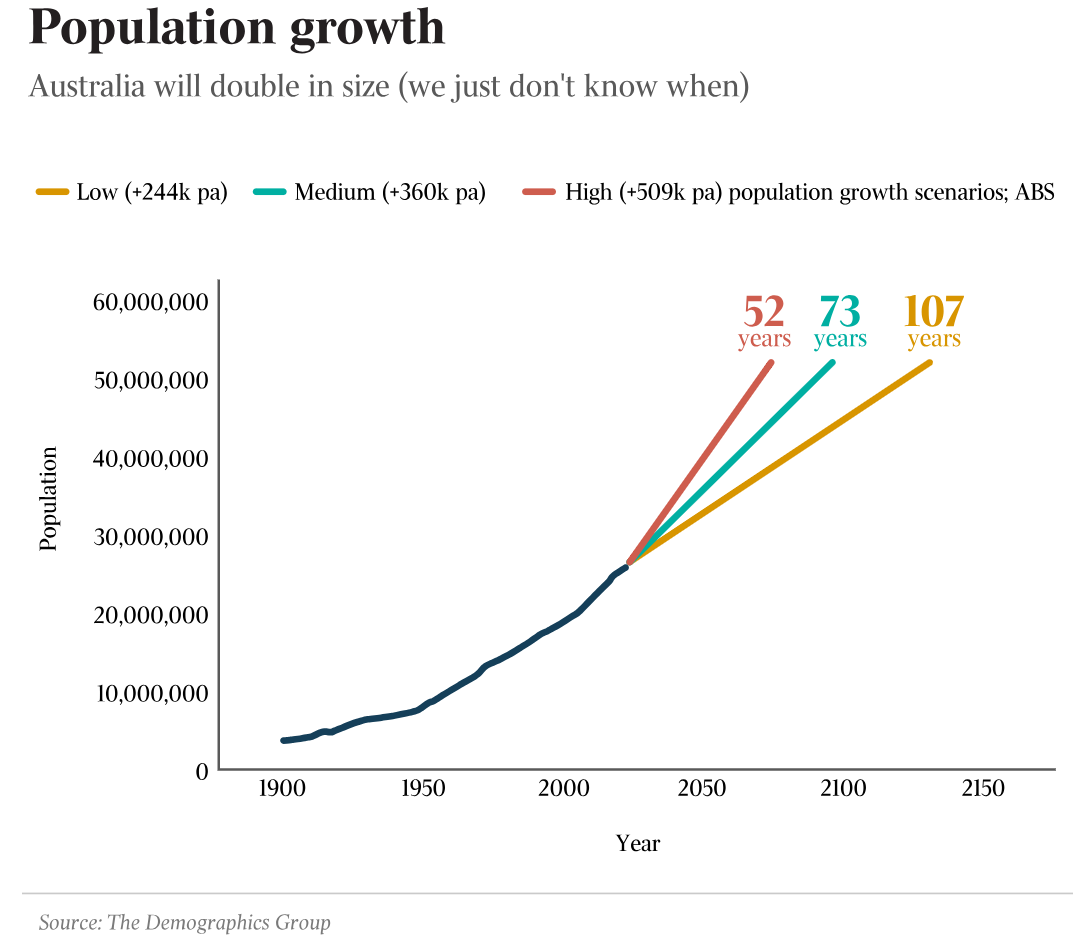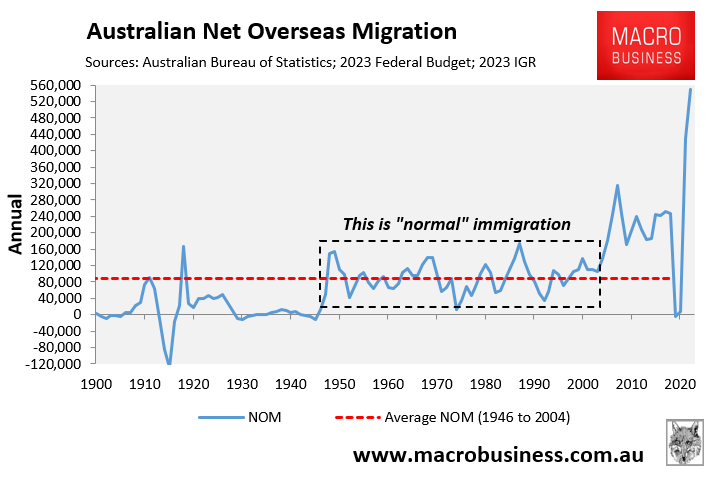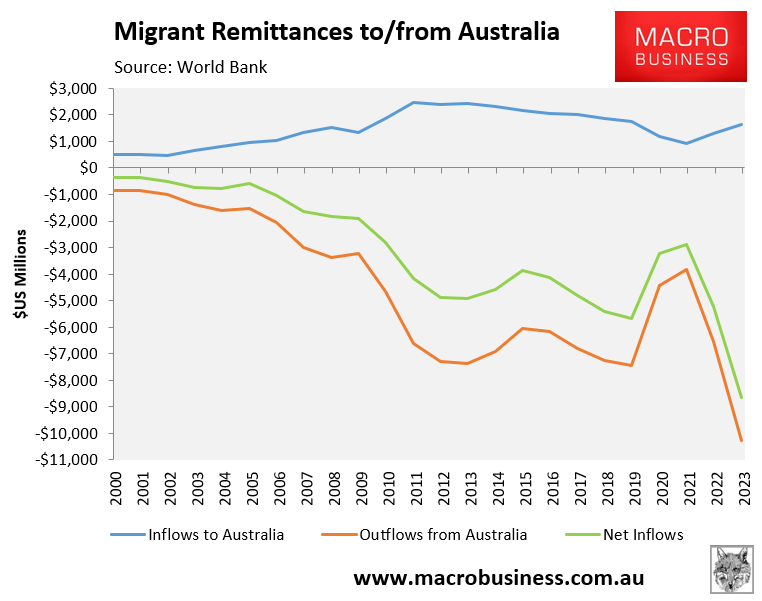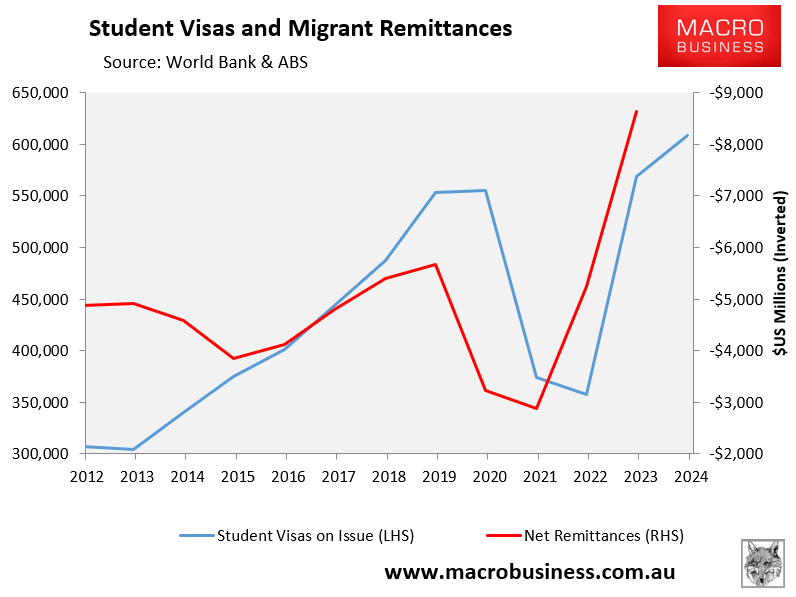The “Stats Guy” Simon Kuestenmacher is a renowned immigration lobbyist. For years he has pumped out propaganda supporting a Big Australia.
Late last year, Kuestenmacher celebrated Australia’s “business model”, which he claimed relies on maintaining a mass immigration policy to generate wealth and prosperity:
In Australia we create wealth by doing four things very well: Mining, agriculture, international education and tourism. That’s it. That’s what we export.
That’s how we achieve a positive trade balance and bring foreign capital into our country.
Our simplistic but lucrative national business model guarantees a continuation of the high migration approach, slows efforts of economic diversification, and delivers general wealth and prosperity (at least as soon as we fix housing)…
As long as we rely on mining, agriculture, education and tourism we will be operating a high migration regime…
For the Australian business model to work we need local workers. A low migration scenario in Australia would necessitate a complete realignment of our national business model:…
I would therefore argue that, looking 10 to 40 years (or even longer) into the future, the only plausible migration scenario for Australia is a high one.

It appears Kuestenmacher has had a change of heart. Because suddenly he has recognised that Australia’s business model is fundamentally flawed and is killing the middle class:
The Atlas of Economic Complexity, produced by the Growth Lab at Harvard University, measures (you guessed it) the complexity of economies around the world.
The researchers analysed 133 countries and placed Australia at 93, an embarrassing rank. This makes our economy less economically complex than Uganda, ranked 92. In the 2000 version of this ranking Australia sat significantly higher at 60…
Australia has become lazy and complacent. We have rested too long on our laurels.
The simple business model of Australia allowed us to fall behind in these rankings without experiencing immediate pain.
Quick recap on what our national business model actually is. We sell raw mining and agricultural commodities to the world, largely to Asian nations. On top of these we educate international students and entertain international tourists. That’s it. That’s all we do as a nation that is of any concern to the rest of the world…
No country in the world concentrates such a high share of its population in just five cities. Over two-thirds of all Australians cram into our five largest cities.
This further drives up house prices, ensuring Australia features among the world’s least affordable housing markets…
Over the past 50 years, Australia slowly but steadily eroded its middle class. By now the middle class is the smallest, rather than the largest segment of the workforce.
The “business model” described by Simon Kuestenmacher guarantees that Australians’ living standards will deteriorate.
First, Australia’s mining and agricultural exports are driven by international demand and are not labour intensive.
As a result, importing millions of people through net overseas migration dilutes Australia’s mineral riches and exports among more people, resulting in reduced wealth per person (other factors remaining constant).
This brings us to the second component of this “business model”, which is based on funnelling people into low-productivity people-servicing industries such as education, hospitality, and so on, while directing the country’s productive effort towards infrastructure and housing in order to keep up with rapacious population growth.
Australia’s population has increased by 8.3 million (over 40%) this century alone due to extreme levels of immigration.

However, business investment, infrastructure investment, and housing have not kept pace.

As a result, capital stock per worker has decreased, causing “capital shallowing” and reduced productivity:

Source: Gerard Minack.
Congestion costs have also increased as infrastructure has been overburdened, further limiting output.
As highlighted by economist Gerard Minack last year:
Australia’s economic performance in the decade before the pandemic was, on many measures, the worst in 60 years.
Per capita GDP growth was low, productivity growth tepid, real wages were stagnant, and housing increasingly unaffordable. There were many reasons for the mess, but the most important was a giant capital-to-labour switch: Australia relied on increasing labour supply, rather than increasing investment, to drive growth.
Australia’s population-led growth model was a demonstrable failure in the 15 years prior to the pandemic. Remarkably, the country now seems to be doubling down on the same strategy. The result, unsurprisingly, is likely to be more of the same.
This takes us to Kuestenmacher’s false claim that education is a significant export earner for Australia, which I have repeatedly debunked.
The ABS wrongly classifies all expenditure by international students in Australia as an export, even though most students earn money to pay for their expenses working in Australia.
The ABS also wrongly classifies international students as non-residents for the duration of their visas, unlike other visa classes (other than tourists and holidaymakers).
Finally, migrant remittance data shows a massive outflow of funds from Australia:

And this outflow matches the rise in student visa numbers:

This outflow of remittances suggests that international education is more likely to be an economic import for Australia than an export.
Commentators such as Kuestenmacher should, therefore, stop spreading the myth that international education is a significant export earner for Australia that the country should want to expand.
The truth is the contrary. Australia should pursue a smaller number of higher-quality students who come to study (rather than work) and pay for their education with money from their home nations.
Kuestenmacher and his ilk should also realise that high population expansion poses the greatest threat to Australia’s natural environment, as explained in the latest State of the Environment Report:

Hilariously Kuestenmacher has previously admitted that the swelling of Sydney and Melbourne above their efficient size has wrecked living standards:
“For decades, we ran a migration nation without linking our national housing and migration policies. A rather ridiculous oversight if you ask me”…
“Melbourne and Sydney both stopped functioning seamlessly in their current set-up (one main CBD, low population density, huge urban sprawl) at around 4 million residents”.
Yet, Kuestenmacher feverishly supports the failed ‘Big Australia’ business model, despite its abject failure.
When you are in an economic hole, Simon Kuestenmacher, stop digging.

